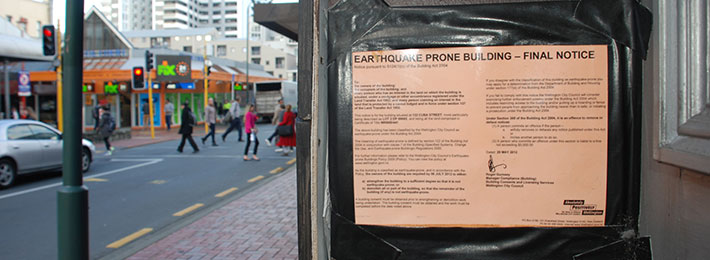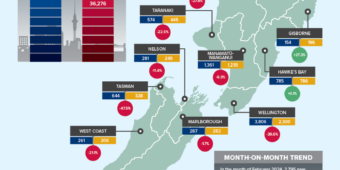Building Controls updates
27 Jul 2016, Featured, LBP & Regulation, Prove Your Know How

Bans, exemptions and extensions – Building Controls updates have it all. Read on to find out what changes have been made over the past two months
When it comes to building performance, MBIE’s role as the overarching regulator is to work with stakeholders to deliver fit-for-purpose, performance-based building regulation that protects the public’s safety and property, and helps lift the sector’s performance.
MBIE works with building practitioners, officials, consumers and other regulators to understand what matters to them, and ensure they understand their roles and responsibilities.
Its range of statutory responsibilities for building and housing includes administering New Zealand’s building legislation and working with other regulators whose legislation has an impact on the building sector.
As part of its role, MBIE also has to provide clear, effective guidelines, information, education and enforcement. This includes regular Building Controls updates, which are featured on the business.govt.nz website.
There have been a number of significant updates of late.
To ensure you’re across them all, we’ve put together a summary of changes made in the last two months:
Designing fire cells
On 4 July, MBIE issued a clarification on designing firecells for more than 1,000 people. A firecell is any space including a group of contiguous spaces on the same or different levels within a building, which is enclosed by any combination of fire separations, external walls, roofs and floors.
If you are designing a firecell to be occupied by more than 1,000 people, you need to comply with the requirements of Building Code clause C4.4, even though the number of occupants might be different at the time of any evacuation.
Clause C4.4 applies to any firecell with more than 1,000 people and:
- Is not time dependent.
- Cannot be varied during an evacuation.
- Its requirements must be applied throughout the entire evacuation.
This is explained in the clause and cannot be overridden by the use of Verification Method C/VM2.
The Verification Method is a tool for justifying a fire engineering design solution and cannot be used to predict location of occupants in an evacuation.
Firecells with high occupant loads (more than 1,000 people) are at greater risk due to:
- The total number of occupants.
- Inefficiencies in an evacuation.
- Longer escape times.
Exempt from consent
From 30 June, a change to building consent exemptions means that new carports, whether free-standing or attached, do not require a building consent form.
The exemption applies to free-standing or attached carports that are:
- On ground level and;
- No greater than 20m2.
This is a change to Schedule 1 of the Building Act, which contains a list of building work that does not require a building consent.
Carport requirements are set out in clause 18 (more commonly known as exemption 18) of Schedule 1, which was amended by the Building (Exempt Building Work) Order 2016. Previously, exemption 18 referred only to attached carports.
Foil insulation ban
The chief executive of MBIE has declared a ban, under section 26 of the Building Act 2004, on retrofitting or repairing foil insulation in residential buildings. It came into force on 1 July.
The ban is specifically on the following building methods:
- The installation of foil insulation into residential buildings with an existing electrical installation (retrofitting foil insulation), and;
- The repair of foil insulation in residential buildings with an existing electrical installation (e.g. stapling ripped or damaged foil back onto the floor joists of a building).
The risk with retrofitting foil insulation is that the person installing it could accidentally pierce a live electrical cable with the fasteners (e.g. staples or nails) they are using to attach the foil to the building structure. The foil, being metallic, conducts electricity and can become live if it comes into contact with live electrical wiring – potentially enlivening the entire underfloor of a building. To date, there have been five reported deaths in New Zealand caused by electrocution associated with foil insulation in a residential building, as well as one reported non-fatal electric shock.
The ban will remain in place until amended or revoked by the Ministry. It is an offence under the Building Act to breach a ban and anyone who breaches the ban may be liable to a fine of up to $200,000.
Anyone concerned about how to work around foil insulation should consult WorkSafe’s guidance or engage the services of a licensed electrical worker.
New system for managing earthquake-prone buildings
The law for managing earthquake-prone buildings is being changed to avoid a ‘one-size-fits-all’ approach. It addresses recommendations from the Canterbury Earthquakes Royal Commission and the findings of a comprehensive review by the government. It also reflects a number of public submissions on the proposed system.
The aim is to standardise the rules and processes that apply to earthquake-prone buildings nationally, while still taking into account seismicity around New Zealand. The system prioritises geographic areas (categorised as low, medium and high seismic risk), buildings and parts of buildings that pose the greatest risk, while retaining as much built heritage as possible.
Features of the new system include:
- Clarifying the definition of an earthquake-prone building.
- Establishing a national register of earthquake-prone buildings.
- Issuing enhanced notices for such buildings.
These measures aim to improve public information and encourage owners to remediate their buildings.
The new Earthquake-Prone Building (EPB) methodology will enable territorial authorities to profile and identify potentially earthquake-prone buildings in their districts. Timeframes for this process and deadlines for building owners to remediate earthquake-prone buildings will be set relative to their location and level of seismic risk.
The legislation defines a new category of ‘priority buildings’ in high and medium seismic risk areas. Those buildings include certain education buildings, some hospital buildings and buildings used as emergency shelters and for emergency services.
They will need to be identified and remediated within half the timeframe of other earthquake-prone buildings.
MBIE is developing new regulations to support the implementation of the system. Public consultation on the final form of the new regulations and the EPB methodology will take place later this year.
Register to earn LBP Points Sign in



